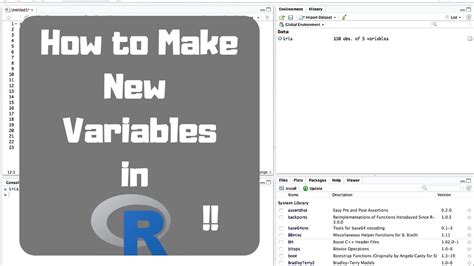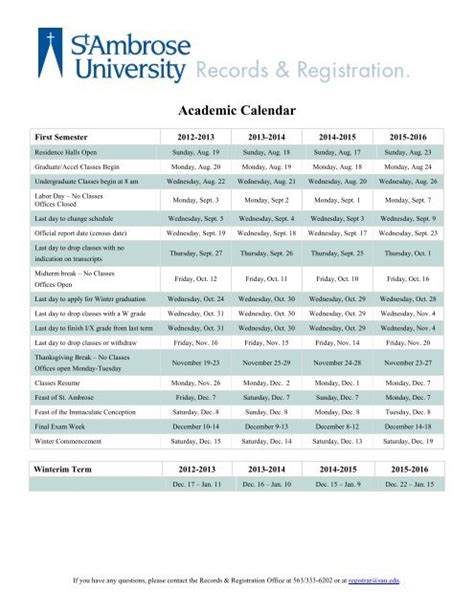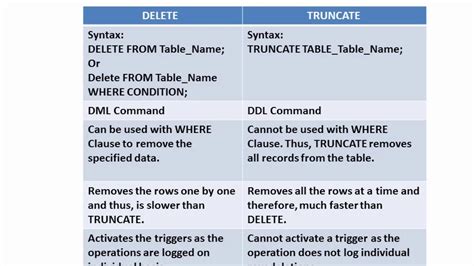Introduction to Creating New Variables in R

Creating new variables in R is a fundamental aspect of data manipulation and analysis. It allows you to transform existing data, create new indicators, or combine variables to better understand your data. This guide will walk you through the process of creating new variables in R, including basic operations, using conditional statements, and handling missing values.
Setting Up Your Environment
To start working with R, ensure you have R installed on your computer along with a suitable IDE (Integrated Development Environment) like RStudio. For this example, let’s assume you have a basic understanding of R and have it installed.
Basic Operations
Creating new variables often involves basic arithmetic operations or combining existing variables. Let’s consider a simple example using a dataframe.
# Load necessary libraries
library(dplyr)
# Create a sample dataframe
df <- data.frame(
Name = c("Alice", "Bob", "Carol"),
Age = c(25, 30, 28),
Height = c(165, 170, 168),
Weight = c(55, 65, 58)
)
# Display the original dataframe
print(df)
# Create a new variable 'BMI' (Body Mass Index)
df$BMI <- df$Weight / ((df$Height / 100)^2)
# Display the updated dataframe
print(df)
Using Conditional Statements
Sometimes, you need to create variables based on conditions. R provides several ways to achieve this, including the use of ifelse() function.
# Create a new variable 'AgeGroup' based on 'Age'
df$AgeGroup <- ifelse(df$Age < 30, "Young", "Older")
# Display the updated dataframe
print(df)
Handling Missing Values
When dealing with real-world data, missing values are common. R represents missing values as NA. You can use the is.na() function to check for missing values and handle them appropriately.
# Introduce a missing value in the 'Weight' column
df$Weight[1] <- NA
# Create a new variable 'WeightCategory' with a condition to handle missing values
df$WeightCategory <- ifelse(is.na(df$Weight), "Unknown",
ifelse(df$Weight < 60, "Light", "Heavy"))
# Display the updated dataframe
print(df)
Advanced Operations
For more complex operations, you might want to use functions like mutate() from the dplyr package, which allows you to create new variables in a more readable and efficient way.
# Load the dplyr library if not already loaded
library(dplyr)
# Create new variables using mutate
df <- df %>%
mutate(
BMI = Weight / ((Height / 100)^2),
AgeGroup = ifelse(Age < 30, "Young", "Older"),
WeightCategory = ifelse(is.na(Weight), "Unknown",
ifelse(Weight < 60, "Light", "Heavy"))
)
# Display the updated dataframe
print(df)
Best Practices
- Always check the structure of your dataframe using
str(df)before creating new variables. - Use meaningful variable names that describe the content.
- Document your code, especially when performing complex operations, to ensure readability and maintainability.
- Use packages like
dplyrfor data manipulation as they provide efficient and readable functions.
Conclusion
Creating new variables in R is a powerful tool for data analysis and manipulation. By understanding how to perform basic operations, use conditional statements, and handle missing values, you can efficiently prepare your data for analysis. Remember to follow best practices to keep your code organized and maintainable.
Key Points
- Basic Operations: Use arithmetic operators to create new variables.
- Conditional Statements: Utilize
ifelse()for creating variables based on conditions. - Handling Missing Values: Check for
NAvalues and handle them appropriately. - Advanced Operations: Leverage
mutate()fromdplyrfor efficient variable creation. - Best Practices: Check dataframe structure, use meaningful names, document code, and use appropriate packages.
FAQ Section
How do I check for missing values in R?
+You can use the is.na() function in R to check for missing values, which are represented as NA.
What is the purpose of the mutate() function in R?
+
The mutate() function from the dplyr package is used to create new variables or modify existing ones within a dataframe.
How do I handle missing values when creating new variables?
+You can use conditional statements like ifelse() to check for missing values (NA) and assign a specific value or category accordingly.



